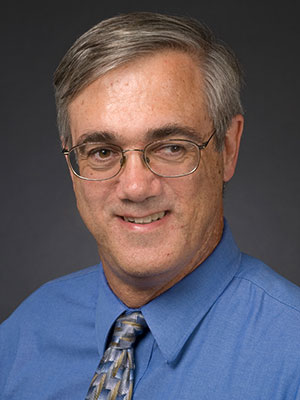My research projects focus on the sedimentology and sequence stratigraphy of carbonate rocks. My most recent projects are collaborative studies with Peter Sheehan (Milwaukee Public Museum) of Upper Ordovician-Lower Silurian facies, sequences and communities of the Great Basin and Estonia. We are currently developing a project to look at the sedimentological and paleontological changes in the east Baltic Middle Ordovician-Lower Silurian section as Baltica moved from sub-polar to tropic settings. This interval is of particular interest because it includes the Great Ordovician Radiation, the end Ordovician extinctions, and the Early Silurian recovery. Peter and I are working with Leo Ainsaar (Tartu University), Linda Hints, Olle Hints, Jaak Nõlvak (Institute of Geology, Tallinn Technical University), Andri Dronov (Moscow State University), and Seth Finnegan (University of California) on this project. Last summer, Seth and I traveled to Estonia to meet with our colleagues to examine outcrops and cores to understand the basic stratigraphy and facies relations (and plan our grant submission).
Rubel, Madis, Nestor, Vee, Harris, Mark T., Sheehan, Peter, Anisaar, Leho, Hints, Linda, Männik, Peep, and Nõlvak, Jaak. “A high-resolution chitinozoan composite for East Baltic Lower Silurian based on numerical analysis” Geological Quarterly 50. (2006): 323-332.
Pope, MIchael, and Harris, Mark T. “New insights into Late Ordovician climate, oceanography and tectonics” Palaeogeography, Palaeoclimatology, and Palaeoecology 210. Palaeogeography, Palaeoclimatology, and Palaeoecology. (2004): 117-118.
Harris, Mark T., Sheehan, Peter M., Anisaar, Leho, Hints, Linda, Männik, Peep, Nõlvak, Jaak, and Rubel, Madis.
“Upper Ordovician sequences of western Estonia” Palaeogeography, Palaeoclimatology, and Palaeoecology 210. (2004): 135-148.
Harris, Mark T. “Developing geoscience student-learning centered courses” Journal of Geoscience Education 50.5 (2002): 515-523.
Harris, Mark T. “Strategies for implementing pedagogical changes by fault at a research university” Journal of Geoscience Education 49.1 (2001): 50-55.
Harris, Mark T., Lehrmann, Daniel J., and Lambert, Lance L. “Comparison of the depositional environments and physical stratigraphy of the Cutoff Formation (Guadalupe Mountains) and the Road Canyon Formation (Glass Mountains); lowermost Guadalupian (Permian) of West Texas” Smithsonian Contributions to the Earth Sciences 32. Ed. Wardlaw, B. R., Grant, R. E., and Rohr, D.. (2000): 127-152.
Lambert, Lance L., Lehrmann, Daniel J., and Harris, Mark T. “Correlation of the Road Canyon and Cutoff formations, West Texas, and its relevance to establishing an international Middle Permian (Guadalupian) series” Smithsonian Contributions to the Earth Sciences 32. Ed. Wardlaw, B. R., Grant, R. E., and Rohr, D.. Smithsonian Contributions to the Earth Sciences. (2000): 153-183.
